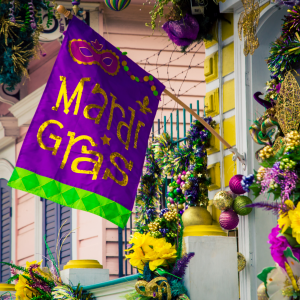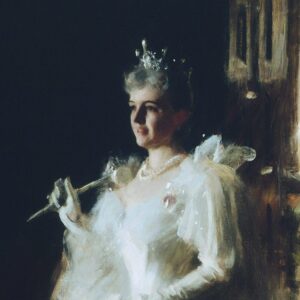
The Rise and Fall of the Tampa Mafia
Published on November 21, 2023
eATLAS’ Tampa Mafia Tour is a 90-minute, self-guided driving tour that takes you to 12 homes, bars, cemeteries, and more that featured in the city’s notorious history with the mob (https://adventures.playeatlas.com/view/bBL3R53jUxYbswEDHV7t/Tampa-Mafia-Tour). It was created by mob expert Scott Deitche, who has written seven books about the Mafia, several of which focus on Tampa.
By Dave Lifton (@daveeatschicago)
When we think of cities with notorious mob histories, New York, Chicago, and Las Vegas generally come to mind. But Tampa, Fla., deserves to be in the conversation, thanks to its collection of shady, nefarious characters who toiled in the local underworld organizations.
Known as the “White Shadow,” Charlie Wall was Tampa’s first major crime boss. Born into privilege—his father and maternal grandfather had been mayors in the city’s early days—Wall got involved in bolita, an illegal lottery game popular in the Ybor City neighborhood, while in his teens. By the Roaring Twenties, he was controlling most of the bolita parlors in Tampa, and was using his power to support organized labor and local politicians.
But there was a rising player on the scene. Sicilian-born Ignacio Antinori had made his bones in heroin trafficking, supplying not just Tampa but also major Midwestern cities. Antinori recruited Santo Trafficante Sr., a bootlegger who also ran bolita parlors. With increased power thanks to Trafficante, Antinori was able to challenge Wall for control of Tampa’s rackets. Their turf war that started around 1928 would become called the “Era of Blood.”
By the time it ended, Wall’s operations had become severely weakened, and Antinori was gunned down in 1940, in a hit that was reportedly done by the Chicago Outfit (Al Capone’s former organization) as payback for a shipment of substandard drugs for which he refused to give a refund. Trafficante emerged as the leader of the Tampa Mafia, and subsequently promised Wall protection from retribution on the condition that he leave the business.
If the 1940s were relatively calm after the Era of Blood, it saw Trafficante become the most powerful mobster in all of Florida. During this time, his son, Santo Jr., began taking a greater role in the business, particularly in Cuba’s casinos and nightclubs, where he had the protection of the Batista government. Cuba not only became a major revenue stream for the Trafficantes, it gave them a safe place to hide when the heat was on.

In their absence, a caporegime named Salvatore “Red” Italiano ran the operations until 1950, when he fled to Mexico. Then Estes Kefauver entered the picture. The Democratic senator from Tennessee launched federal investigations into organized crime in the United States. Italiano fled to Mexico, and James Lumia became the acting boss, but not for long. On June 5, 1950, two weeks before he was scheduled to testify in a conspiracy trial against fellow mobsters who had allegedly plotted to kill a Hillsborough County sheriff, Lumia was gunned down in his car. The murder has never been solved, although it’s widely believed that Santo Trafficante Sr. was responsible.
Due to their hiding in Cuba, the Trafficantes and most of their associates managed to avoid Kefauver’s subpoenas when his investigations reached Tampa towards the end of 1950. Instead, the senator found a cooperating witness in Charlie Wall, who told the committee about his and his rival’s activities during the Era of Blood.
Santo Sr. died of natural causes in 1954, and was succeeded by his son, who proceeded to lift the order protecting Wall. On April 18, 1955, Wall was killed in his bedroom, with his head bashed in by a blunt object and his throat slashed from ear-to-ear.
Dubbed “The Silent Don,” Santo Jr. expanded his family’s investment in Cuba. But it all came crashing down on Dec. 31, 1958, when Batista was overthrown by Fidel Castro. Trafficante was kicked out of Cuba, and, with Tampa not safe for him, relocated to Miami. He found an unusual ally in the CIA, who roped him and other mobsters formerly involved with Havana into their plot to kill Castro. Trafficante eventually supplied some volunteers for the unsuccessful invasion at the Bay of Pigs.
It’s been alleged that Trafficante had a hand in the assassination of President John F. Kennedy, but there is no definitive proof linking him to the tragedy. Trafficante even testified before the U.S. House Select Committee on Assassinations in 1978, where he denied any involvement.
Trafficante continued to run the Tampa Mafia until his 1987 death. For all his illegal activities, he never spent a single night in an American jail. He was succeeded by Vincent LoScalzo, who wound down most of the Trafficante family’s business in Tampa as the longtime members died.
Related Posts

The Adventure starts when you say it does.
All eATLAS Adventures are designed and built by experienced eATLAS Whoa!Guides. They're always on. Always entertaining. And always ready to go.
Check out our Adventures!


